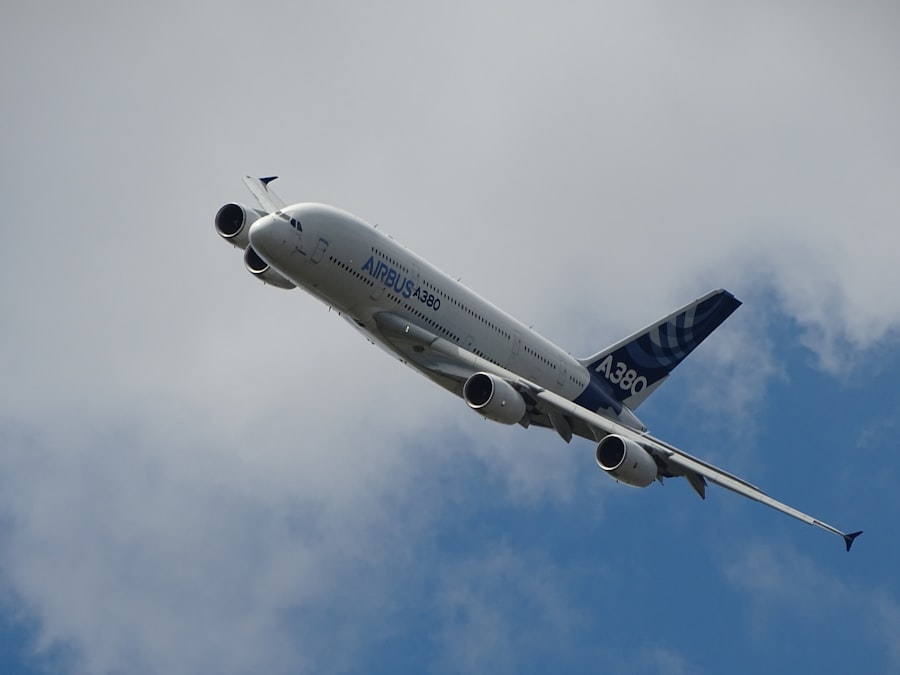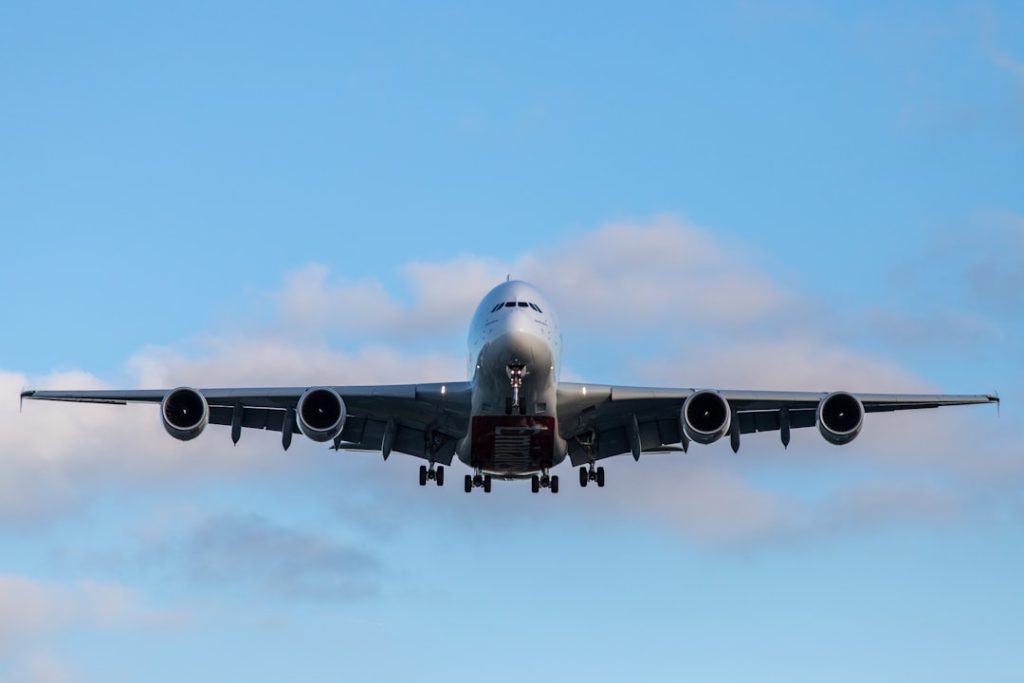The Airbus A380, a marvel of modern engineering, stands as a testament to the ambitious spirit of the aviation industry. Launched in 2005, this double-deck, wide-body aircraft was designed to meet the growing demand for air travel while providing an unparalleled passenger experience. With its capacity to carry over 800 passengers in an all-economy configuration and around 550 in a typical three-class layout, the A380 redefined the concept of air travel by offering airlines a solution to congestion at major airports.
The aircraft’s first commercial flight took place in October 2007 with Singapore Airlines, marking a significant milestone in aviation history. The A380 was conceived during a time when air travel was experiencing exponential growth, particularly in emerging markets. Airlines were seeking larger aircraft to accommodate increasing passenger numbers while maximizing efficiency.
The A380’s development was not without challenges; it faced delays and budget overruns that tested the resolve of Airbus. However, its eventual entry into service heralded a new era of long-haul travel, characterized by comfort, capacity, and innovation. As the largest passenger aircraft ever built, the A380 has become an icon of the skies, symbolizing both the potential and challenges of modern aviation.
Key Takeaways
- The Airbus A380 is a double-deck, wide-body, four-engine jet airliner, the world’s largest passenger airliner.
- The A380’s design and features include a spacious cabin, advanced technology, and fuel efficiency.
- The A380 has had a significant impact on the aviation industry, influencing airport infrastructure and airline operations.
- The A380 has played a key role in air travel, offering increased capacity and luxury for passengers.
- The A380’s environmental impact includes its fuel efficiency and noise reduction, making it a more sustainable option for air travel.
Design and Features of the Airbus A380
The design of the Airbus A380 is a remarkable feat of engineering that combines aesthetics with functionality. Its distinctive double-deck configuration allows for a spacious cabin layout, providing passengers with more room to move and relax during their flights. The aircraft measures approximately 72.7 meters in length and has a wingspan of 79.7 meters, making it not only the largest passenger aircraft but also one of the most recognizable.
The wings are designed with a unique upward curve, known as winglets, which enhance aerodynamic efficiency and reduce fuel consumption. Inside, the A380 offers a variety of cabin configurations tailored to different airline needs. The spaciousness of the aircraft allows for innovative features such as onboard lounges, bars, and even showers in some premium cabins.
For instance, Emirates Airlines has outfitted its A380s with luxurious first-class suites that include private doors and personal minibars. The cabin is designed with advanced noise-reduction technology, ensuring a quieter environment for passengers. Additionally, the aircraft is equipped with state-of-the-art entertainment systems that provide a wide array of movies, music, and games, enhancing the overall travel experience.
The Airbus A380’s Impact on the Aviation Industry

The introduction of the Airbus A380 has had a profound impact on the aviation industry, reshaping how airlines approach long-haul travel. By enabling airlines to transport more passengers on a single flight, the A380 has helped alleviate congestion at busy airports, particularly in major hubs like London Heathrow and Dubai International Airport. This capacity increase has allowed airlines to optimize their routes and improve operational efficiency, ultimately leading to lower ticket prices for consumers.
Moreover, the A380 has spurred competition among airlines to offer enhanced services and amenities. As carriers sought to differentiate themselves in a crowded market, many invested heavily in upgrading their A380 fleets with luxurious interiors and superior customer service. This trend has raised the bar for passenger expectations across the industry, prompting even smaller aircraft operators to enhance their offerings.
The A380’s influence extends beyond just passenger comfort; it has also encouraged advancements in airport infrastructure to accommodate larger aircraft, leading to significant investments in terminal expansions and runway upgrades.
The Airbus A380’s Role in Air Travel
| Aspect | Details |
|---|---|
| Introduction | The Airbus A380 is a double-deck, wide-body, four-engine jet airliner manufactured by Airbus. It is the world’s largest passenger airliner. |
| Capacity | The A380 can accommodate between 525 to 853 passengers, depending on the configuration. |
| Role in Air Travel | The A380 has been used for long-haul flights, particularly on high-density routes between major airports. |
| Impact | It has allowed airlines to meet the increasing demand for air travel and reduce congestion at major airports. |
| Challenges | However, the A380 has faced challenges due to changing market dynamics and the impact of the COVID-19 pandemic on air travel. |
The Airbus A380 plays a crucial role in facilitating global air travel by connecting distant cities and regions. Its ability to operate long-haul flights efficiently makes it an ideal choice for airlines looking to serve international routes that require high passenger capacity. For example, routes such as Dubai to Los Angeles or London to Sydney have become staples for A380 operators, allowing them to transport thousands of passengers across continents with ease.
In addition to its operational capabilities, the A380 has become synonymous with luxury travel for many passengers. Airlines have leveraged the aircraft’s spacious design to create premium experiences that cater to high-end travelers. Features such as onboard lounges and spacious first-class cabins have transformed long-haul flights into enjoyable experiences rather than mere necessities.
This shift has not only attracted affluent travelers but has also encouraged airlines to invest in their premium offerings across their entire fleet.
The Airbus A380’s Environmental Impact
While the Airbus A380 has revolutionized air travel in many ways, it is essential to consider its environmental impact as well. The aircraft is designed with fuel efficiency in mind; its advanced aerodynamics and lightweight materials contribute to reduced fuel consumption per passenger compared to older aircraft models. According to Airbus, the A380 emits approximately 75% less CO2 per passenger than earlier generation aircraft on similar routes, making it a more environmentally friendly option for airlines.
However, despite these advancements, the sheer size of the A380 raises concerns about its overall environmental footprint. The aircraft’s large engines consume significant amounts of fuel during takeoff and landing phases, which can contribute to higher emissions in congested airspace. Additionally, as global air travel continues to grow, the cumulative impact of operating large aircraft like the A380 must be carefully managed.
Airlines are increasingly exploring sustainable aviation fuels (SAFs) and other technologies to mitigate these effects and ensure that air travel remains viable for future generations.
The Future of the Airbus A380

As we look toward the future of the Airbus A380, several factors will influence its continued relevance in the aviation landscape. The COVID-19 pandemic significantly altered air travel dynamics, leading many airlines to reassess their fleets and operational strategies. Some carriers have retired their A380s early due to reduced demand for air travel and a shift toward smaller, more fuel-efficient aircraft.
However, there remains a dedicated market for the A380 among airlines that prioritize capacity and passenger experience. Airbus announced in 2019 that it would cease production of the A380 by 2021 due to declining orders and changing market demands. This decision marked the end of an era for the iconic aircraft but also opened up opportunities for airlines to acquire used models at competitive prices.
As travel demand rebounds post-pandemic, there is potential for a resurgence in interest for the A380 as airlines seek to rebuild their networks and cater to high-capacity routes.
Notable Airlines and Routes for the Airbus A380
Several airlines have embraced the Airbus A380 as a cornerstone of their long-haul operations, each showcasing unique routes that highlight the aircraft’s capabilities. Emirates Airlines stands out as one of the largest operators of the A380 fleet, utilizing it extensively on routes connecting Dubai with major cities around the world such as New York City, Sydney, and London. The airline’s commitment to luxury service aboard its A380s has made it synonymous with high-end air travel.
Singapore Airlines was among the first carriers to introduce the A380 into service and continues to operate it on key routes such as Singapore to London Heathrow and Sydney. The airline’s focus on customer experience is evident in its cabin design and service offerings aboard the A380. Other notable operators include Qantas Airways, which uses the aircraft on transpacific routes between Australia and North America, and British Airways, which employs it on high-demand routes from London to various international destinations.
The Legacy of the Airbus A380
The legacy of the Airbus A380 is one marked by innovation, ambition, and transformation within the aviation industry. As an engineering marvel that pushed the boundaries of what was possible in commercial aviation, it has left an indelible mark on how airlines operate and how passengers experience air travel. While its future may be uncertain amid changing market dynamics and evolving consumer preferences, its impact on global connectivity and luxury travel will be felt for years to come.
As airlines continue to adapt to new challenges and opportunities in a post-pandemic world, the lessons learned from operating the A380 will inform future developments in aircraft design and service delivery. Whether through advancements in sustainability or enhancements in passenger comfort, the spirit of innovation that defined the Airbus A380 will undoubtedly continue to shape the future of aviation long after its final flights have taken place.


